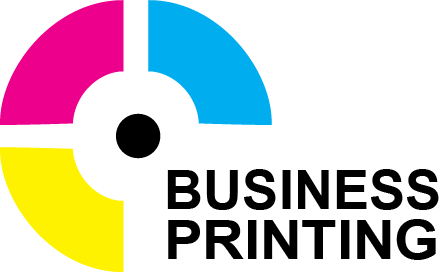Print marketing services ,In a time when digital ads dominate, print marketing still holds its ground. It’s tangible, memorable, and builds trust in ways online channels often can’t. But what separates the campaigns that thrive from those that fall flat? Successful print marketing doesn’t just look good; it reaches the right audience and delivers a message they remember. This blog uncovers the key elements that make it work today.
Success in print marketing isn’t just about creating eye-catching designs or distributing materials. It’s about understanding what truly resonates with your audience and tracking measurable outcomes. How do you know your campaign is working? Let’s break it down into actionable metrics and strategies.

Photo by Artem Podrez
KPIs are the foundation for evaluating any print campaign’s success. They give you a measurable way to see if you’re meeting your goals. Here are the most impactful KPIs to track:
By aligning your goals with these KPIs, you ensure a results-driven approach to Print marketing services.
Nothing beats hearing directly from your audience. Their feedback can offer insights that numbers can’t. How do you gather and interpret these responses effectively?
The more feedback you collect, the clearer the picture of your campaign’s effectiveness. Engage with this data to pinpoint what worked and what didn’t.
When it comes to measuring tangible success, sales metrics take center stage. A spike in sales or customer acquisition is often the ultimate proof your campaign made an impact.
Sales numbers not only validate your strategy but help justify future investments in Print marketing services. Success isn’t just in the numbers, though—it’s about long-term customer loyalty as well.
Ultimately, a successful campaign blends defined KPIs with actionable customer interactions and measurable sales growth. Keep these metrics in mind when analyzing your next Print marketing services initiative.
Defining your target audience is one of the most critical steps in building a successful print marketing campaign. Without knowing who your ideal audience is, even the best designs and compelling messages may fall on deaf ears. This section explores practical methods to help you understand your audience better and fine-tune your approach.

Photo by Luis Quintero
To connect with your audience, you first need to learn as much as possible about them. Market research is your starting point. By utilizing structured techniques, you can gather valuable insights into consumer behavior, preferences, and needs. Here are some proven methods:
Market research is your compass, guiding every decision that follows to ensure your efforts land with maximum impact.
Once you gather enough research data, effective segmentation divides your target audience into smaller, defined groups based on common characteristics. Why is segmentation essential? Because a one-size-fits-all campaign rarely works. Tailoring messages to different audience types ensures relevance and boosts engagement.
Here’s how segmentation can enhance campaign effectiveness:
For example, a luxury resort might create separate brochures: one for honeymooners, highlighting romantic getaways, and another for business travelers, showcasing its meeting facilities.
Develop customer personas based on segmentation data. A persona humanizes your target audience and guides creative decisions. What challenges do they face? What solutions can you provide? Let these personas shape your campaign’s tone and messaging.
In the end, understanding and segmenting your audience are non-negotiable steps for Print marketing services success.
When it comes to Print marketing services, great design isn’t enough. Your content must speak to the reader, draw them in, and inspire action. Compelling content connects your message to your audience in ways that are clear, visually engaging, and persuasive. Below, we’ll break down how clear messaging, strong visuals, and strategic calls-to-action come together to make your materials truly impactful.
In Print marketing services, every word counts. Space is limited, so your message must be concise and straight to the point. Ambiguity confuses readers; clarity inspires them to take action.
Think of your messaging as a direct conversation with the reader. How would you pitch your idea if you had just a minute of their undivided attention? Let that guide your words.

Photo by RDNE Stock project
The design of your materials should grab attention without overwhelming the message. Visual elements like colors, fonts, and images do more than look good—they guide the reader’s eye and set the tone for your content.
Your visual elements act as the packaging for your campaign. If they’re disorganized or poorly chosen, even the best message can get overlooked.
A campaign without a strong Call-to-Action (CTA) is like a road without signs—you leave your audience lost and unsure how to proceed. Your CTA tells readers exactly what to do next.
Psychologically, the simpler and more compelling your ask, the stronger the response. Think about how you guide someone from interest to action, and align your CTA with that path.
Each of these elements—clear messaging, visual appeal, and calls-to-action—creates a seamless and engaging experience for the reader. Together, they ensure that your Print marketing services doesn’t just look great but drives real results.
A print marketing campaign’s success hinges on its ability to not only engage but also effectively reach the intended audience through print marketing services. Distribution plays a vital role in ensuring your materials are placed where they’ll have maximum impact. Similarly, timing and frequency of distribution can shape how well your campaign resonates with its audience.

Photo by Italo Crespi
Not all distribution channels are created equal. The right one depends on your target audience and campaign goals. Let’s explore some widely-used channels:
Each channel offers a unique advantage. Direct mail might work wonders for a boutique clothing store targeting specific zip codes, while trade shows are perfect for a tech company showcasing new innovations. A thoughtful choice of channels maximizes reach and engagement.
Timing is everything in marketing. The when and how often you distribute materials can make or break your campaign’s success. Let’s break it down:
Imagine you’re launching a fitness center. A campaign distributed during New Year’s fitness resolution season will likely outperform one launched in mid-summer. Similarly, multiple touches—like a postcard first and a brochure weeks later—can build sustained interest.
By choosing the right channels and fine-tuning your timing and frequency, your print marketing campaign will not only reach but resonate with your audience. This thoughtful approach ensures your materials don’t just exist—they get noticed.
A successful print marketing campaign doesn’t stop at distribution. Utilizing print marketing services to measure outcomes and adapt strategies is just as important. You can’t improve what you don’t measure, right? Let’s explore how tracking results and making smart tweaks can keep your campaign on track.

Photo by RDNE Stock project
Tracking and analyzing data is essential to know what’s working and what isn’t. With the right tools, you can turn raw data into actionable insights. Some top data analysis tools for marketing campaigns include:
Tools like these let you tie specific results, like web traffic or sales spikes, back to your campaign. If your direct mail piece included a QR code, for example, tools enable you to see how many people scanned it and what they did next.
Testing your campaign before going all-in can save time and money. A/B testing, where you compare two versions of your material to see which performs better, is a proven method for improvement.
Here’s why it’s crucial:
A/B testing isn’t just a one-off practice either. Keep iterating. If your initial campaign drives results, tweak elements for better performance: optimize your CTAs or target different audience segments. Marketing should evolve with your audience’s preferences.
By using data analysis tools and conducting consistent A/B testing, your campaign becomes a living, breathing strategy—one that adapts and grows. These steps ensure you’re not just creating campaigns but refining them to reach their full potential.
A successful print marketing campaign hinges on understanding your audience, delivering standout messaging, and strategically tracking results. It’s not just about handing out flyers—it’s about creating meaningful connections that lead to action.
By combining targeted distribution, engaging content, and measurable KPIs, you can transform your strategy into a results-driven force. Use these insights to fine-tune your next campaign.
Ready to see the impact of Print marketing services firsthand? Start building materials that demand attention today.
